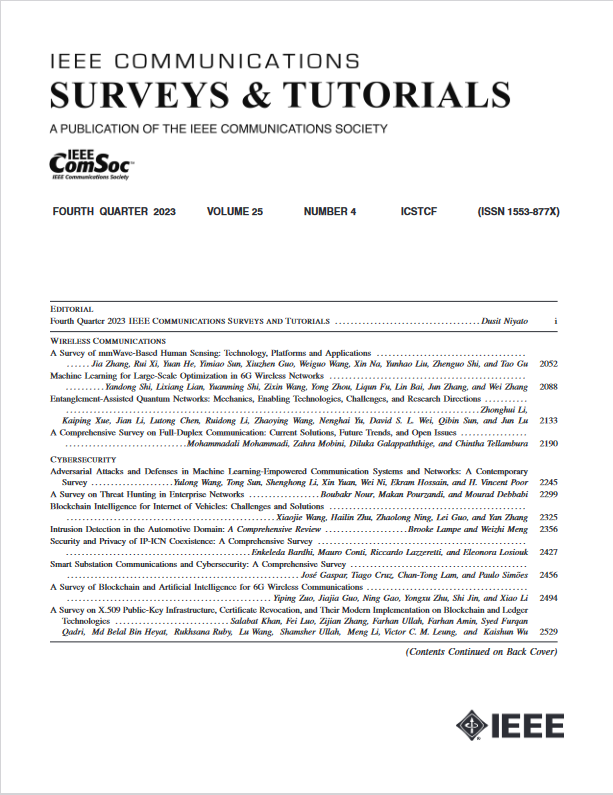A Tutorial on Immersive Video Delivery: From Omnidirectional Video to Holography
IF 34.4
1区 计算机科学
Q1 COMPUTER SCIENCE, INFORMATION SYSTEMS
引用次数: 4
Abstract
Video services are evolving from traditional two-dimensional video to virtual reality and holograms, which offer six degrees of freedom to users, enabling them to freely move around in a scene and change focus as desired. However, this increase in freedom translates into stringent requirements in terms of ultra-high bandwidth (in the order of Gigabits per second) and minimal latency (in the order of milliseconds). To realize such immersive services, the network transport, as well as the video representation and encoding, have to be fundamentally enhanced. The purpose of this tutorial article is to provide an elaborate introduction to the creation, streaming, and evaluation of immersive video. Moreover, it aims to provide lessons learned and to point at promising research paths to enable truly interactive immersive video applications toward holography.沉浸式视频传输教程:从全方位视频到全息
视频服务正在从传统的二维视频发展到虚拟现实和全息图,为用户提供六个自由度,使他们能够在场景中自由移动并根据需要改变焦点。然而,这种自由度的增加转化为对超高带宽(以每秒千兆比特为单位)和最小延迟(以毫秒为单位)的严格要求。要实现这种身临其境的服务,必须从根本上增强网络传输以及视频表示和编码。这篇教程文章的目的是详细介绍沉浸式视频的创建、流媒体和评估。此外,它旨在提供经验教训,并指出有希望的研究路径,以实现真正的交互式沉浸式视频全息应用。
本文章由计算机程序翻译,如有差异,请以英文原文为准。
求助全文
约1分钟内获得全文
求助全文
来源期刊

IEEE Communications Surveys and Tutorials
COMPUTER SCIENCE, INFORMATION SYSTEMS-TELECOMMUNICATIONS
CiteScore
80.20
自引率
2.50%
发文量
84
审稿时长
6 months
期刊介绍:
IEEE Communications Surveys & Tutorials is an online journal published by the IEEE Communications Society for tutorials and surveys covering all aspects of the communications field. Telecommunications technology is progressing at a rapid pace, and the IEEE Communications Society is committed to providing researchers and other professionals the information and tools to stay abreast. IEEE Communications Surveys and Tutorials focuses on integrating and adding understanding to the existing literature on communications, putting results in context. Whether searching for in-depth information about a familiar area or an introduction into a new area, IEEE Communications Surveys & Tutorials aims to be the premier source of peer-reviewed, comprehensive tutorials and surveys, and pointers to further sources. IEEE Communications Surveys & Tutorials publishes only articles exclusively written for IEEE Communications Surveys & Tutorials and go through a rigorous review process before their publication in the quarterly issues.
A tutorial article in the IEEE Communications Surveys & Tutorials should be designed to help the reader to become familiar with and learn something specific about a chosen topic. In contrast, the term survey, as applied here, is defined to mean a survey of the literature. A survey article in IEEE Communications Surveys & Tutorials should provide a comprehensive review of developments in a selected area, covering its development from its inception to its current state and beyond, and illustrating its development through liberal citations from the literature. Both tutorials and surveys should be tutorial in nature and should be written in a style comprehensible to readers outside the specialty of the article.
 求助内容:
求助内容: 应助结果提醒方式:
应助结果提醒方式:


